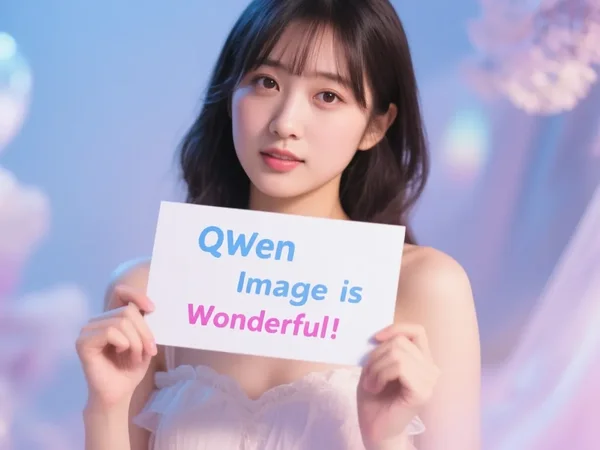The landscape of generative AI is evolving at a breakneck pace. While we've seen incredible progress in image creation, the next frontier is precise, controllable editing. The challenge lies in creating a model that can make complex changes without corrupting the original image's integrity.
Today, we are thrilled to introduce Qwen-Image-Edit-Plus, a 20B MMDiT model built on the foundation of Qwen-Image. This model is engineered to be a powerful tool for next-generation image editing, bringing a new level of precision and flexibility to the table.
🔥 Qwen-Image-Edit-Plus (model name also Qwen-Image-Edit-2509) IS LIVE — and it’s a GAME CHANGER. 🔥
Why Qwen-Image-Edit-Plus is a Game Changer
Existing models often fall into one of two camps: they're great at creating but poor at editing, or they offer limited editing capabilities. Qwen-Image-Edit-Plus was developed to bridge this gap, focusing on controlled, high-fidelity edits that are both precise and creative.
Key Advantages:
- Precision and Control: Unlike many models that make broad, unpredictable changes, Qwen-Image-Edit-Plus offers granular control over edits, whether it's a subtle tweak or a major transformation.
- Bilingual Text Proficiency: The model handles both Chinese and English text editing natively, a crucial feature for global applications.
- Superior Performance: Rigorous evaluation on public benchmarks has shown that Qwen-Image-Edit-Plus achieves State-of-the-Art (SOTA) results, proving its effectiveness and reliability.
Qwen-Image-Edit-Plus Key Features:
Multi-image Editing Support: It supports various combinations such as "person + person," "person + product," and "person + scene." Optimal performance is currently achieved with 1 to 3 input images.
Improved Person Editing Consistency: Better preservation of facial identity, supporting various portrait styles and pose transformations
Improved Product Editing Consistency: Better preservation of product identity, supporting product poster editing
Improved Text Editing Consistency: In addition to modifying text content, it also supports editing text fonts, colors, and materials
Semantic vs. Appearance Editing: The Core Difference
A key innovation of this model is its dual approach to image editing.
-
Appearance-Level Editing: This is for surgical, low-level changes. Think of it as inpainting on a professional level. The goal is to make a specific change while keeping all other regions of the image absolutely untouched. This is ideal for tasks like removing an object, adding a new element, or correcting a flaw.
-
Semantic-Level Editing: This is for high-level, creative transformations. The model is allowed to make broader pixel changes across the image as long as it preserves the core meaning and content. This is perfect for style transfer, object rotation, or IP creation where the final output is stylistically different but semantically consistent with the original.
How to Use It: Practical Examples and Prompts
The beauty of Qwen-Image-Edit-Plus lies in its intuitive, prompt-based interface. Here are some examples of what you can do and the prompts you would use.
Example: Composing an Image from Multiple Inputs
Goal: Create a new image of a girl wearing a specific dress and adopting a particular pose, by combining three separate source images.
- Input Images:
- Image 1: A portrait of a girl.
- Image 2: A photo of a black dress.
- Image 3: An image of a model striking a specific pose.
- Prompt:
In the style of a fashion photo, create an image of the girl from Image 1, wearing the black dress from Image 2, and in the pose from Image 3.

Conclusion: The Future of Editing is Here
Qwen-Image-Edit-Plus is more than just a new model; it's a paradigm shift. It empowers creators by democratizing complex editing tasks. By offering unparalleled control and precision through simple prompts, it promises to be a fundamental building block for the next generation of creative tools and applications.
We believe this model will become an indispensable asset for developers, designers, and enthusiasts alike. What will you create with it?
Share Article
Publish Date
September 23, 2025
Estimated Reading Time
About 5 minutes
Word Statistics
About 1200 words

